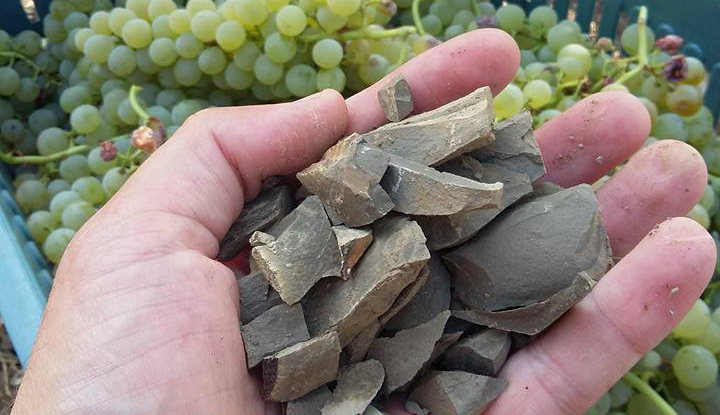
Winemaking in Slovenia has experienced a rocky last century. While viticulture and winemaking have existed in Slovenia since long before the Romans would introduce winemaking in France, Spain and Germany, the advent of communism after the fall of the Austro-Hungarian Empire and the creation of Yugoslavia in 1920 led to rapid disassociation with winemaking traditions. Local traditions were lost to the bulk wine economic engines of communism. After 1991, when Slovenia was the first Yugoslav state to declare independence, Slovenia started a process of rediscovering its artisanal approach to winemaking. Writing in 2013 in the New York Times Eric Asimov commented, "Perhaps none of the former Communist countries have come quite so far as Slovenia in redeveloping a vibrant wine culture."
Slovenia boasts a geographic diversity which provides a wide variety of microclimates. It is bordered to the north by Austria, separated by the Alps, while to the west is Italy and the Adriatic Sea with Hungary to the east and Croatia forming the southern border. Seventy-five percent of Slovenia’s vineyards produce white wines from familiar varieties, such as Sauvignon Blanc and Pinot Grigio, as well as native grapes such as Ribolla Gialla (known as Rebula), Vitovska Grganja, Zelen and Pinela. With the reds they make Pinot Noir, Cabernet Sauvignon and Merlot, along with native varieties such as Teran.
Grape Collective talks with Martin Gruzovin of the Guerila winery whose vineyards grow on the southern slopes of Vipavska Brda.
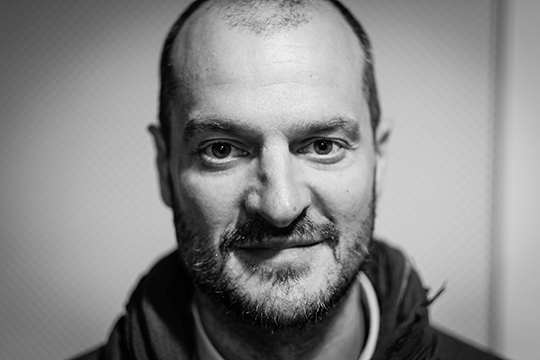 Christopher Barnes: Martin, talk a little bit about Slovenia as a country. Two million people, right? I mean, it's a very small country.
Christopher Barnes: Martin, talk a little bit about Slovenia as a country. Two million people, right? I mean, it's a very small country.
Martin Gruzovin: Yes. Slovenia is small, but a country with a lot of variety. It's between Italy, Austria, Hungary, and Croatia, but it's a small country with everything very close. In two hours, you can go from the sea to the most distant border, and you change through four climates. You can see from the top of the mountain, you see the border, and you can see the sea. We have a small part of the sea, 40 kilometers of coast only. But in Slovenia, we have big a tradition of winemaking, since Roman times, but we don't have the reputation of France, or other well-known countries. But the winemaking, it's part of tradition. There are a lot of people who make wine, not for a living, but they have some plants, and they produce their own wine they drink, if they are in a suitable area.
Talk a little bit about your background as a winemaker.
Let's say wine is in my blood because when I was a kid, my grandfather made wine after the second World War. He was also a soldier in the war, and then he was injured. When he was less than 40 years old, he already retired. That's quite unusual these days. And he decided, when he got married to my grandmother, that they get some land and plant their first vineyard. And he planted it by hand. Each plant, digging by hand.
And when I remember the taste of the wine, it's when I was a kid, and my father and mother would send me to go and pick up a bottle. It's in that barrel. Bring the wine, and bring it for lunch. We were going with the empty bottle, glass bottle. It was some special design. You drink the wine, and then sometimes we also tried a little, hiding away. But I already knew that even at lunch, they will point at me with a finger, you know? Not that finger, vertical, but horizontal, and you tried the wines. And I remember the taste of that wine still, in my mind. It was before the invention of the pneumatic press. It was traditional. The wine was with skin contact at that time, and the wines I try to redo now. It was wines before the coming of enology, before things were added to make more of a commercial wine, to make it more a beverage, not wine. An alcoholic beverage. But I still remember this. And not only me, it's a lot of people in Slovenia that they grow up with wine. Martin, give us a little bit of a history lesson on the wine industry in Slovenia.
Martin, give us a little bit of a history lesson on the wine industry in Slovenia.
Okay. I wasn't alive at the time, but I know from stories and from history how it was in Slovenia. My grandfather, for example, changed his passport three times from 1926 when he was born, until he died 10 years ago. But in Slovenia, there is a tradition of winemaking, with the first wine brought from the Romans. Then, in the Middle Ages, there were a lot of varieties.
We have a book, which is one of the oldest books on the subject, which talks about winemaking before phylloxera. It's called Vinoria and was written in Slovenia by a priest who was living in my place, in Planina. He wrote a book in 1844 about winemaking, not only in Slovenia, but in major parts of Europe. And in the book, he describes wine from Iran, the Valley of Mosel, Italy, France. He visited, as a priest, all these regions and wrote this book, which is for me very important. And he also described the ways of winemaking. The maceration, the varieties, and it listed in the book more than 140 varieties. But this was pre-phylloxera time.
And in Slovenia, there was all this diversity of these varieties. But then, after phylloxera, we lost almost two-thirds of these varieties, which don't exist anymore now, with root stock changing. And after that there was the war period, which was a very bad period. And also the surfaces in Slovenia occupied by wine during this period decreased a lot, three times. It's unclear but now we have between 16 and 18 thousand hectares of vineyards in Slovenia. It is unclear because some vineyards are not registered in the registration of vineyards because they are a hobby, let's say, of the winemaker. So there is this little disconnection in numbers.
But after the war period, the World War, we had in our place a socialistic, communistic regime, the former Yugoslavia. And it was a big trend to plant international varieties because with winemaking, you were just a wine grower, or grape grower, better, because it was forbidden to make and bottle your private wine. You just produced the grapes and sent them to big co-operatives. With the remaining wine you were allowed to have some barrels for your own consumption, but you couldn't bottle it and sell it.
So in this period, with this big trend, a big losing of local indigenous grape varieties. For example, the wine, which is also half Zelen and Pinela, these two were almost extinct in this period because the Agriculture Ministry forced the planting of international varieties. So with regards to Zelen and Pinela, for example, in the 1980s, they occupied less than one hectare for all producers. And a funny story is that one older person in our population, in Vipavska Dolina, planted a vineyard of Zelen, and he was fined for doing this. Fined, by the Agriculture Ministry. But after 20 years in his vineyard, the expert found the genetic selection to develop new plants for Zelen, and that's kind of a wild thing.
Now the situation is completely different. There are a lot of boutique, private winemakers. A lot of changing also in the way of sustainable grape-growing. A lot of people are talking about ecological or organic farming, biodynamic farming, which is now, let's say, becoming more common, or less strange, because before, people were looking at us like we are from another planet. So now it's starting to be more and more local indigenous varieties. Everybody's trying to develop them.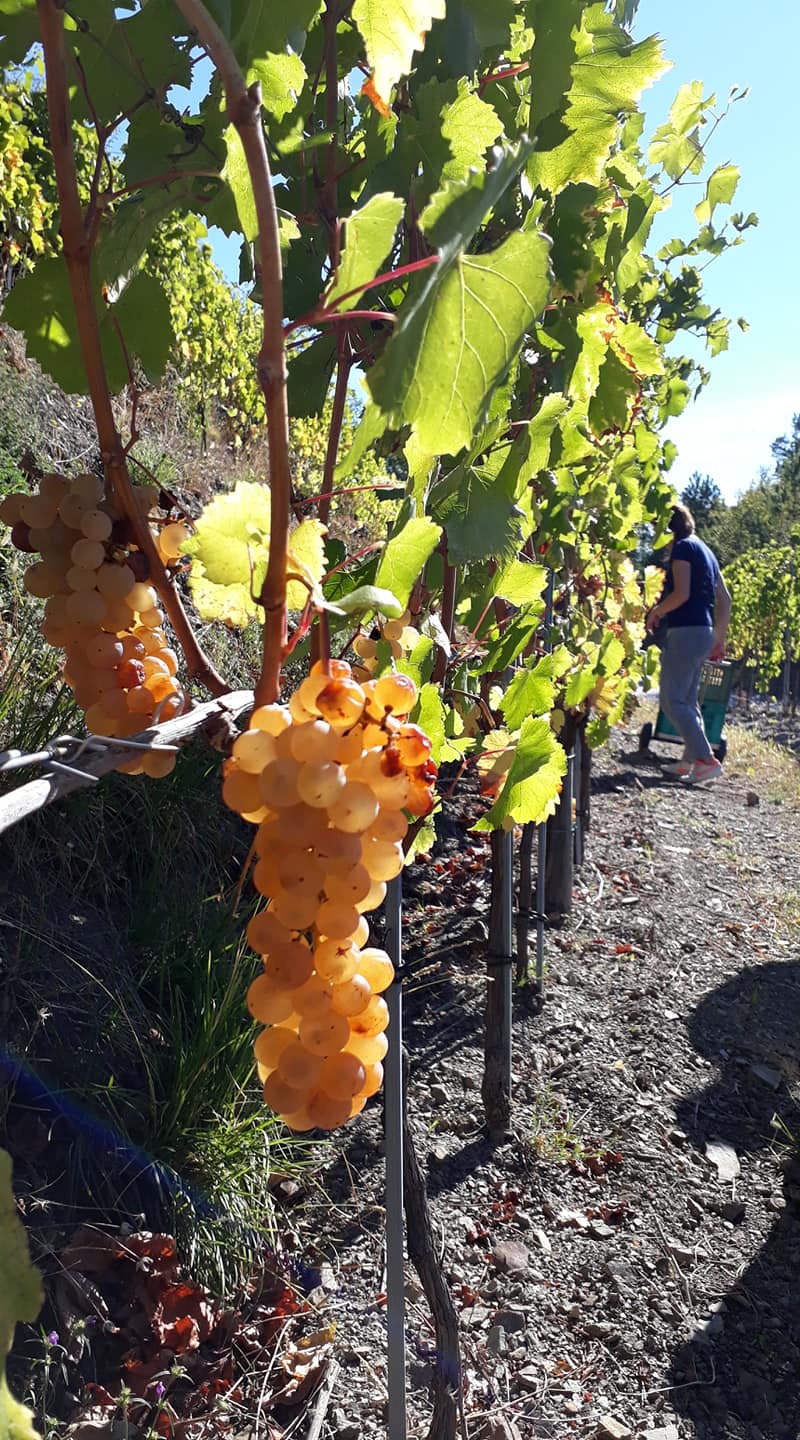 So after Yugoslavia broke up and then there was the war, which ...
So after Yugoslavia broke up and then there was the war, which ...
We were a little lucky that, in our country, we are the northern part of the former Yugoslavia. We went apart quite in a, let's say, it wasn't a huge war here. It was just a little movement of farming, but not a real war, so we got lucky. It was not like Serbia and Bosnia and Croatia. We passed this critical moment in the best possible way.
Transitioning from a period of time where people are growing grapes for co-operatives, and I imagine when you're growing a grape for a co-operative, you don't really care as much about the grapes that you're growing.
No, no.
You just wanna grow as much as you can, right? How does the grape-growing culture change to a more artisanal approach? How does that happen?
This change is happening still now, every day. When you go in the vineyard, you now see the things that force you to grow in quality. Nobody needs our wine. There's enough wine in the world, in terms of quantity, even quality. But if you have a good terroir you can make an excellent wine. But you must listen to the plant, the surroundings, nature, see how it works. And with open eyes, then you see what is the best system for pruning, for everything, how you manage the vineyard.
So now it's starting to develop. The yields per plant are lower than they used to be when people were growing grapes just for co-operatives. It was maybe 20 kilos per plant. But now, we've reached one kilo per plant, so it's less than one bottle per plant. In previous times, it was 10 liters per plant, so the yields change.
Also, the forcing of the plant to give such quality. In the '70s, '80s, it was becoming popular to use all these artificial fertilizers. This is like raping a plant because you force it what to eat, you know? You subscribe a diet for a plant. When you use mineral fertilizer, it salts the root of the plant. It's forced to assimilate to it. But people in general, men, we think that we know everything. We think we even know what is better for the plant itself, but it's because we are too sure of our science. But in nature there are things which are not science. We think that the earth is the center of everything, but I think it's not like this. We are in a system with things over us, energies, and we can not prescribe the plant what to eat. She must be in a balance with constellations, moon cycles, natural algorithms, everything, and we must move together with this balance.
And Martin, when did you evolve? How did your winemaking evolve to becoming biodynamic?
It's difficult to say what happened because when you work in this way, these changes are not immediate. You must see it's a transition, and in my case, we planted a lot of new vineyards. You see how the plant develops diversely. You can compare it with a baby. If you have a plant which was used to being cultivated in a, let's say, conventional way, with a lot of pesticides, herbicides, and then you start to converted it into biodynamic, that plant will never manage to survive because it's like a child. If you have a child and you force it to eat antibiotics when it's sick, you will think it's healed with this medicine. And then what if you said, "Okay, now you will take nothing." Such a person will maybe die, and this is like what happens with a plant. 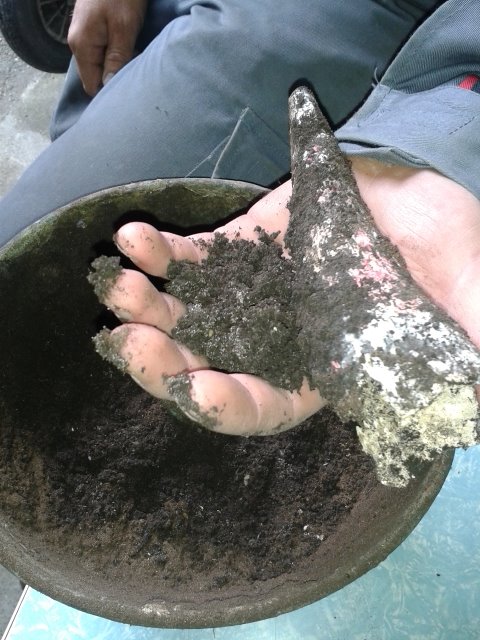 The plant develops, and with biodynamics, we don't cure diseases. We increase the resistance of the plant, and her balance with everything. So in our estate, we saw that our plants since the very beginning were treated in an organic and biodynamic way, and they are growing in a kind of harmony. They grow slowly. They are more resistant. They don't have diseases. We have, not very close, but also we have neighbors with vineyards in normal, let's say, conventional winemaking. And when it's a good year, it's no problem. We all have good grapes. But in the difficult years, you'll see the difference. The neighbor sprays, treats, and they have a lot of disease. Our plants, which are close, are healthy and different.
The plant develops, and with biodynamics, we don't cure diseases. We increase the resistance of the plant, and her balance with everything. So in our estate, we saw that our plants since the very beginning were treated in an organic and biodynamic way, and they are growing in a kind of harmony. They grow slowly. They are more resistant. They don't have diseases. We have, not very close, but also we have neighbors with vineyards in normal, let's say, conventional winemaking. And when it's a good year, it's no problem. We all have good grapes. But in the difficult years, you'll see the difference. The neighbor sprays, treats, and they have a lot of disease. Our plants, which are close, are healthy and different.
Also, for example, you come after harvest, or let's say you visit me, we say two times, 10 days before harvest and one month after. And you see my vineyard and the nearest vineyard. My vineyard has a normal green color. The plants of the neighbor, the leaves, are very dark green. A lot of these leaves, very vigorous growth. And you come after one month after harvest, my vineyard starts to change in color. It's yellow, and if it's a red variety, it starts to be red, very red. And then, slowly, the leaves are falling down. The vineyard of the neighbor, one week after harvest, is just without leaves, like it's January. Everything ... And this is like a process that you must see.
For example, nobody believes when we make compost. You know how it's made, biodynamic compost? You take cow shit, let's say. No? You prepare it from 500 to 509 (biodynamic preparations), and you put them under a straw, and what happens? If you take just a piece of shit and leave it there, and you come after one year, you'll see still shit. But here, it's different. You see, when you put away the straw, there is no more, there is compost. It smells of soil. It's different. It's not shit anymore. And if you slowly open this compost before, you see a lot of animals inside, how it's developing, from the worms, little animals. And then when they go away, you know that the compost is done because through digestion, they transformed the cow manure into compost, and then this compost doesn't smell of shit. It's a pleasant compost, and it's full of energy of microorganisms, of everything you can apply in the vineyard, and gives back life to the earth.
Talk a little bit about some of the indigenous grapes that you work with in Slovenia.
In Slovenia we have quite a lot of indigenous varieties. In Slovenia, for example, the diversity, I think, is our major plus that we can count on. I frequently go to fairs to meet producers I don't know. I come to Burgundy, and they are happy. They have Chardonnay, Pinot Noir. In Slovenia, they come to my region, and when I start to mention how many varieties I have, they say, "Why so many? Why? Are you crazy? Fourteen varieties in a 2,000-hectare appellation. It's this crazy?" I said, "Yes, but it is always like this. These are our varieties. We have plenty of them." Pinela, Zelen, Rebula, Vitovska, Pergulin. It's ... I can start now, and finish tomorrow. But each of these varieties grow in such a small surface that, at the end, it's difficult when you come to commercializing because they are not known. And this kind of wine, at the end, when it is in bottle, it's a problem because if you are alone, you cannot make a trend. It must be a group to make some power, some changes. And yeah. We have really a treasure of these local varieties.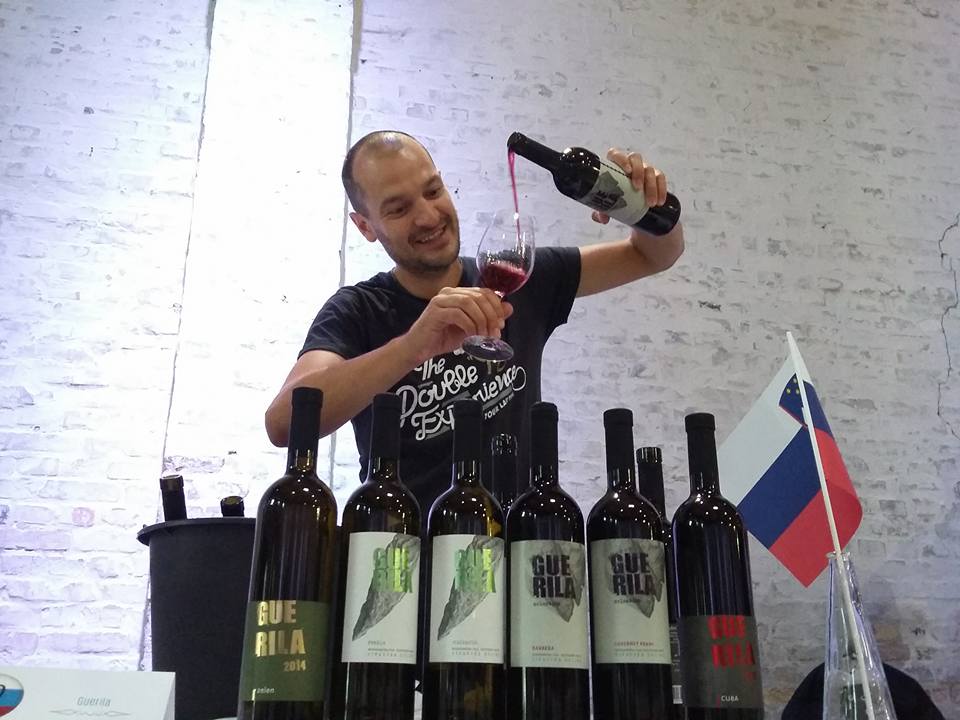 And are there, like, a couple varieties that are more popular, that stand out in the region?
And are there, like, a couple varieties that are more popular, that stand out in the region?
Certainly, now, the biggest thing is Rebula, which is Ribolla Gialla in Italy. That's because it grows on a little bigger territory. A lot of winemakers are proud of producing it, and so they created a brand already. For example, we have Zelen and Pinela, but with a total surface of 70 hectares for all producers together, so it's very difficult.
And then you have in Slovenia also, not only the varieties, it's also a matter of styles. People now, some, they do fresh wine with reductive vinification with selected yeast. Then you have the one with spontaneous fermentation. Then the one who makes a maturated style, somewhat sparkling. It's a mixture of styles. It's really such diverse things. So in the end, each one is trying to promote his own brand. And that's, for now, it's difficult, but it's the only way, in this moment, we can do it.
For example, in the northern part, we have Sipon. Sipon is Furmint. This is also a variety which is local, and it's known. We have Teran.
So Furmint the Hungarian-
Yes. In the north, it's Furmint. In Slovenia, it's Sipon.
Then we have Teran. This is, for example, something particular of Slovenia. It's a red grape from Refosco on terra rossa.
Wasn't there something about how the Slovenian government was suing Croatia over the name Teran?
This is a big mess, no? Teran, in Croatia, they say that it's a variety. In Italy, Terrano, also, they say that it's a kind of Refosco on such surface but Carso and also Istria have terra rossa. This is a red soil with lot of iron in it. And Croatian people have Refosco, but we also have Refosco. In Istria and also in Carso. But Slovenia was protecting the appellation and the way of making the wine by saying that Teran can be produced only with Refosco grapes, which is planted on terra rossa. It then becomes the wine Teran, which is slightly different from Refosco because the balance of the wine is completely different. It's easier in alcohol, higher in acidity, and it's kind of a particularity of this region, always has been.
On the other side, Croatia, they say that Teran is their variety. They call it a variety, Teran. Even growing on white soil, but in our case, this is a Refosco. But here is this unclarity, so Croatia wanted to have Teran as a variety, Slovenia as a wine, and Italian or the Italian part of Carso, the same as Slovenia. So they made an appellation together and tried to register, in the European commission, the name Teran and a provenance. They won, and so for a period, Croatia was forced to remove on the market all wine which was called Teran. It's a long story. But what is funny, in Slovenia, we say, "No soup is eaten as warm as it's cooking," you know? This means that everything is better with a calm approach.And the politicians managed so much this story, that the big co-operatives felt a lot of promotion from the name Teran itself. But this was because of all the manipulation.
We have a wine fair every May in our appellation. This is a fair for small producers, and we invite the wine region, some winemakers to come and present their wine at our fair. And that year, a Croatian arrived from Istria and one official person from the Ministry went there and said, "Oh, this is the European Union. What is this wine doing here?" It was Teran. And I was missing that day.
But the next day, I was visiting that producer, who was, let's say, telling me to go away with this wine. You cannot be here. I was visiting his cellar with some friends, a sommelier, and I felt so bad, you know? I ask, "How was yesterday?" because I didn't know about this accident. And he said, "Why do you ask me?" I just don't know. I said, "What happened?" "They sent me away." I was really ashamed of my country, at the time, you know? Because in the end, we all make wine with our best hopes. We put a lot of effort into making the wine. It's like you have a daughter or a son, and you want them to succeed. The same with your wine. You hope for the best, and you understand, that other producers may work with maybe different ideas. But you wish him always the best, you know?
Absolutely. So now they can use Teran, though, right?
Now, yes.
Well, it's a very complicated story. It's a continental climate, Slovenia, correct?
Slovenia has four types of climates.
In such a small piece of the world. We have, in the Alps, the highest peak is 2,864 meters, and it's just 100 kilometers from the sea. So in there it's a lot of mixture. We have for a slight period, an alpine climate. This means strict winter, very cold. Also summer, a lot of precipitation, snow. Then in this part, where there is no winemaking. Then we have a continental climate. This is more inside of the country where it's also the capital, Ljubljana. But there is also no winemaking. Then we have three wine-growing regions. One is Stajerska, Steiermark. There the wines are closer to the Austrian style. It's the same climate. It's kind of a mixture between Pannonian and continental climate.
Then we have southeast of Slovenia, it's a poor continental climate.. Then we have the Primorska region, which is the southwest part. Here it's a Mediterranean climate, but with influences of continental and alpine climates. So Slovenia is a place worth visiting. It's very small, but it's very various. You never go over a flat piece of land. It's always on hills, changing every meter. You see vegetation, how it changes from Mediterranean to alpine in one hour driving. It's unbelievable.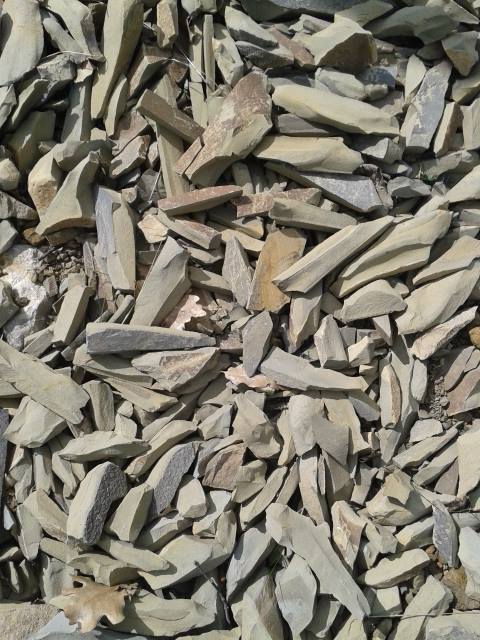 Talk a little bit about the soils and the climate in your specific region.
Talk a little bit about the soils and the climate in your specific region.
Vipavska Dolina takes it's name from the river, Vipava. Just like in other parts, wine growing regions are near a mass of water, which get influences from the sea. In one case, as the Vipava is going in Soca and then in the sea, the Adriatic Sea. So through the valley, we get the influence of the sea.
Then the soil in the region, the parts which are flat around the river, are more alluvial soil, so marble or gravel. And then as you go more on hills because above the river are hills, I'm on one of these hills, you have the marine sediments because in ancient times, there was sea. So we have a marlstone and sandstone pressed together. There are also calcareous parts inside. So it's poor soil, but very mineral, and it's optimal for the wines. This is on the hills. This is about my region. But in Slovenia, you have also volcanic soil in one part. This is in the northeast part. There was also a small volcano in Slovenia, so there you have also different kinds of soils. And in such regions, very various type of soil everywhere.
It sounds very, very diverse. Talk a little bit about the percentage of winemakers that are farming organically versus non-organically.
It's changing quite slowly, let's say. The organic part is growing quicker than the biodynamic. Now I think about 5% of grape growing is organic. Five percent of the total production. But the biodynamic producers, I think we are around 15 only.
But in Slovenia, you have more than 2,000 producers. But with small, small, small estates, But at least a lot of people are going organic. Then to go for biodynamic, it's more about your own idea. It's more that you, like a person, you believe to do things in a biodynamic way.














